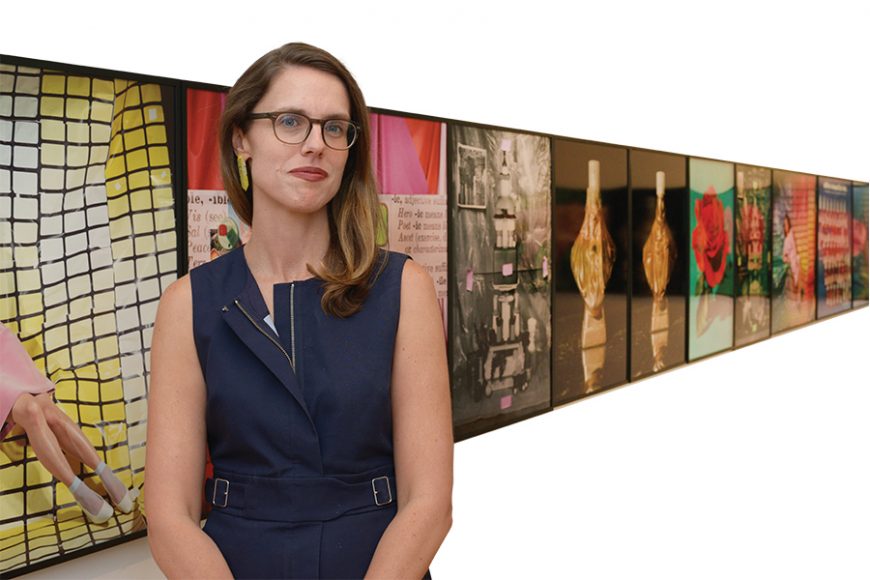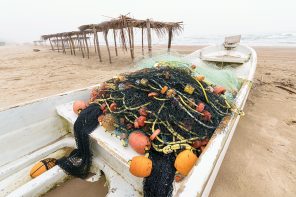In September 2018, Cybele Maylone picked up the reins as executive director of The Aldrich Contemporary Art Museum in Ridgefield.
Maylone previously served for five years as executive director at UrbanGlass, an artist glass studio in Brooklyn and, while she was familiar with the Aldrich in a personal sense, her work at UrbanGlass increased her awareness of the Aldrich’s value as a New England art venue.
“A number of UrbanGlass artists made work for exhibition here at the museum,” she recalls. “I was becoming more involved and attentive to what was happening here in a professional way.”
Prior to UrbanGlass, Maylone was deputy director of apexart, a contemporary art space, and associate development director for individual giving at the New Museum of contemporary art, both in Manhattan. Her work within the contemporary art exhibition space provided her with the right background for leading the Aldrich, which was founded in 1964 with the private collection of fashion designer Larry Aldrich. The museum sold off Aldrich’s collection in 1981 to finance its endowment and pursue the celebration of current artists.
“Larry had the foresight to understand that to be and remain truly contemporary, maintaining a collection was at odds with that mission,” Maylone says. “Nearly 20 years into the museum, that collection had already dated itself.”
For Maylone and her curatorial team, finding the right work to present is both an exciting and a puzzling challenge.
“It is a difficult question for all of us to understand who are the artists whose work really rises to the level that it deserves to be presented here, and what is the right moment in their career,” she says. “For us, a big part is that the artists haven’t yet had this opportunity. They are at a pivotal moment in their career where showing their work to a broader audience in a museum setting and accompanying publications could be transformative to them. …There is something essential or inspiring to be revealed in the presentation of their work.”
But hitching The Aldrich’s wagon to the stars of the art scene can be complex. Maylone acknowledges that the current art scene is a wide and diverse environment with no dominant stylistic trends dictating its direction.
“One of the reasons that contemporary art remains so vital and inspiring is that it has very few boundaries to it in the way artists create and present work,” she says. “I think it is important for The Aldrich to be a place that responds to artmaking and to artists, and when those things change, we have an obligation to follow them.”
Adding to Maylone’s consideration of artistic expression is the diversity of genres and media that today’s artists employ. For example, a recent Harmony Hammond exhibit offered painted sculptures created with such materials as rope, burlap, bone, metal roofing and blood, while a current show of work by Canadian-born Sara Cwynar offers a mix of photography, video installations and a space decorated with wallpaper consisting of classic Modern art imagery. The Aldrich also commissions new work by artists, but that endeavor can also induce a bit of agita.
“Often that means we don’t necessarily know what we are going to be showing until later than we would like,” laments Maylone. “In a perfect world, you would like to have every image that is going to be an exhibition years in advance. That helps in planning a wide variety of things, like fundraising and talking to the press. We want to give the artist freedom, but it can be a nail-biter not knowing where everything is going to go.”
More nail-biting can occur with shows that contain a sharp sociopolitical message tinged with controversy. Earlier this year, The Aldrich presented a show of works by 34 presently and formerly incarcerated artists, while a new exhibit opening Oct. 6 called “Weather Report” links the environmental climate with the political one. Maylone acknowledges that such shows may not please everyone, but she insists they are vital in offering a testament to the ongoing discussions that shape society.
“We work with living artists,” she says. “Living artists are engaged with contemporary social issues. I feel it would disingenuous for us as an institution to not be engaged with the issues that the artists are engaged with.”
For 2020, Malone lined up a major artistic coup: From May 17 to Oct. 11, “Frank Stella’s Stars, A Survey” will highlight a unique subsection of the Abstract Expressionist icon’s output. Maylone notes the Stella show is part of The Aldrich’s tradition of examining underrecognized bodies of an individual’s work.
“Stella is an artist that The Aldrich has had a very, very long relationship with,” she says. “Stella’s last name means star and he’s been making work that incorporates stars in a wide variety of ways. The stars change from two-dimensional representations to three-dimensional sculptures that are built around the stars. This gives us a chance to draw a line around this particular practice both inside and outside of the museum. Some of the work will be installed in the galleries and some will be in our sculpture gardens.”
While hosting a five-month Stella retrospective is a considerable accomplishment, Maylone is still aiming for her concept of a dream exhibition, which she defines as a show that “would be risky and rewarding for the artist involved and deeply engaging for the audience that is coming to see it. A dream exhibition would be one that knocked it out of the park on both fronts. But that’s dreams are for — something to aspire to.”
For more, visit aldrichart.org.






